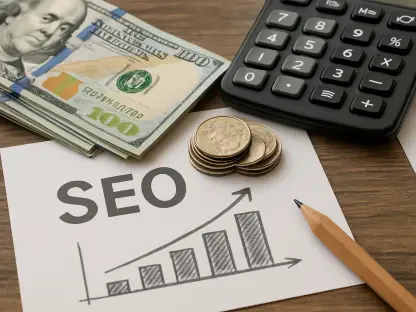In a landscape where the digital advertising industry constantly reinvents itself through innovation and adaptive strategies, the Interactive Advertising Bureau (IAB) has introduced a sweeping revision of its General Terms for Digital Advertising Agreements. Changing dynamics in this sector demand modernized frameworks that can keep pace with the rapid advancements and complex nuances of digital advertising, which the IAB’s initiative seeks to address.
Industry Overview: A Changing Digital Advertising Landscape
The digital advertising industry today is a vast and dynamic ecosystem characterized by rapid innovations, diverse market segments, and profound economic significance. Major industry players, including global advertising agencies, tech companies, and media brands, alongside numerous startups, contribute to a vibrant sector that thrives on technological progression. The industry’s fabric is increasingly shaped by artificial intelligence, data analytics, and automation, which redefine how ads are tailored, targeted, and delivered. Compliance with regulations such as the General Data Protection Regulation (GDPR) and the California Consumer Privacy Act (CCPA) remains pivotal, ensuring responsible and ethical practices in managing user data.
Industry Trends: Shaping the Future of Digital Advertising
Examining Emerging Trends
The advent of artificial intelligence and machine learning has heralded a new era in personalized advertising, making real-time ad adjustments a reality. Consumer behavior is evolving, with audiences craving more personalized and engaging content, thus incentivizing innovative ad technologies. New opportunities arise from the growing influence of virtual reality and augmented reality, offering novel ways to capture audience attention and engagement.
Future Outlook with Market Data
Market projections present a promising future for digital advertising, with continuous growth anticipated in both revenues and innovations. Data indicate an upward trajectory in global digital ad spend as brands increasingly pivot to digital-first strategies, recognizing its efficacy in reaching disparate audiences. Forecasts suggest that emerging markets will experience significant growth, driven by increasing internet penetration and mobile device usage. Adopting standardized contracts is seen as key to maintaining this momentum, allowing the industry to enhance efficiency and competitiveness.
Challenges and Complexities in Digital Advertising
Despite its growth, the digital advertising sector faces considerable challenges, ranging from technological hurdles to market saturation. The complexity of navigating diverse platforms and technologies can hinder streamlined operations and lead to inefficiencies. Privacy concerns and data protection regulations pose additional hurdles, necessitating robust compliance strategies and transparent communication with consumers. Addressing these complexities involves embracing advanced analytics and fostering cross-industry collaborations to simplify advertising processes and improve consumer trust.
Regulatory Landscape: Navigating Legal and Compliance Issues
The regulatory landscape in digital advertising involves stringent laws and evolving standards that organizations must navigate to ensure compliance. Key regulations like GDPR and CCPA heavily influence data collection practices and consumer privacy rights. Organizations adapt by implementing security measures, encryption technologies, and comprehensive compliance programs to build consumer trust and mitigate regulatory risks. The revised IAB terms are a step toward facilitating compliance by promoting standardized practices and reducing the complexity of legal negotiations.
Future Directions: What Lies Ahead for Digital Advertising
Digital advertising’s future promises exciting developments, with groundbreaking technologies set to redefine the industry. The emergence of blockchain for secure and transparent transactions, coupled with the growing significance of connected devices and smart technology, signals transformative potential. Industry stakeholders are expected to focus on harnessing these innovations to deliver more personalized, secure, and efficient ad experiences. Consumer preferences are evolving toward immersive and interactive content, demanding strategic shifts that incorporate these preferences into digital marketing campaigns. Amidst these advancements, regulatory changes and international economic conditions will play vital roles in shaping the industry’s trajectory.
Conclusion and Recommendations
As the IAB embarks on refining the new terms, aligning the interests of diverse stakeholders and setting more efficient industry standards are essential. The revised framework promises to enhance operational efficiency, foster greater trust among industry participants, and reduce legal burdens. Companies should consider investing in adaptive technologies and forming collaborative networks to stay ahead of regulatory requirements and market shifts. Fostering innovation and maintaining agility will be crucial as the digital advertising landscape continues to evolve. By addressing the complexities of modern advertising through collaborative efforts and forward-thinking strategies, the industry can unlock new growth avenues while ensuring stronger consumer relationships.









